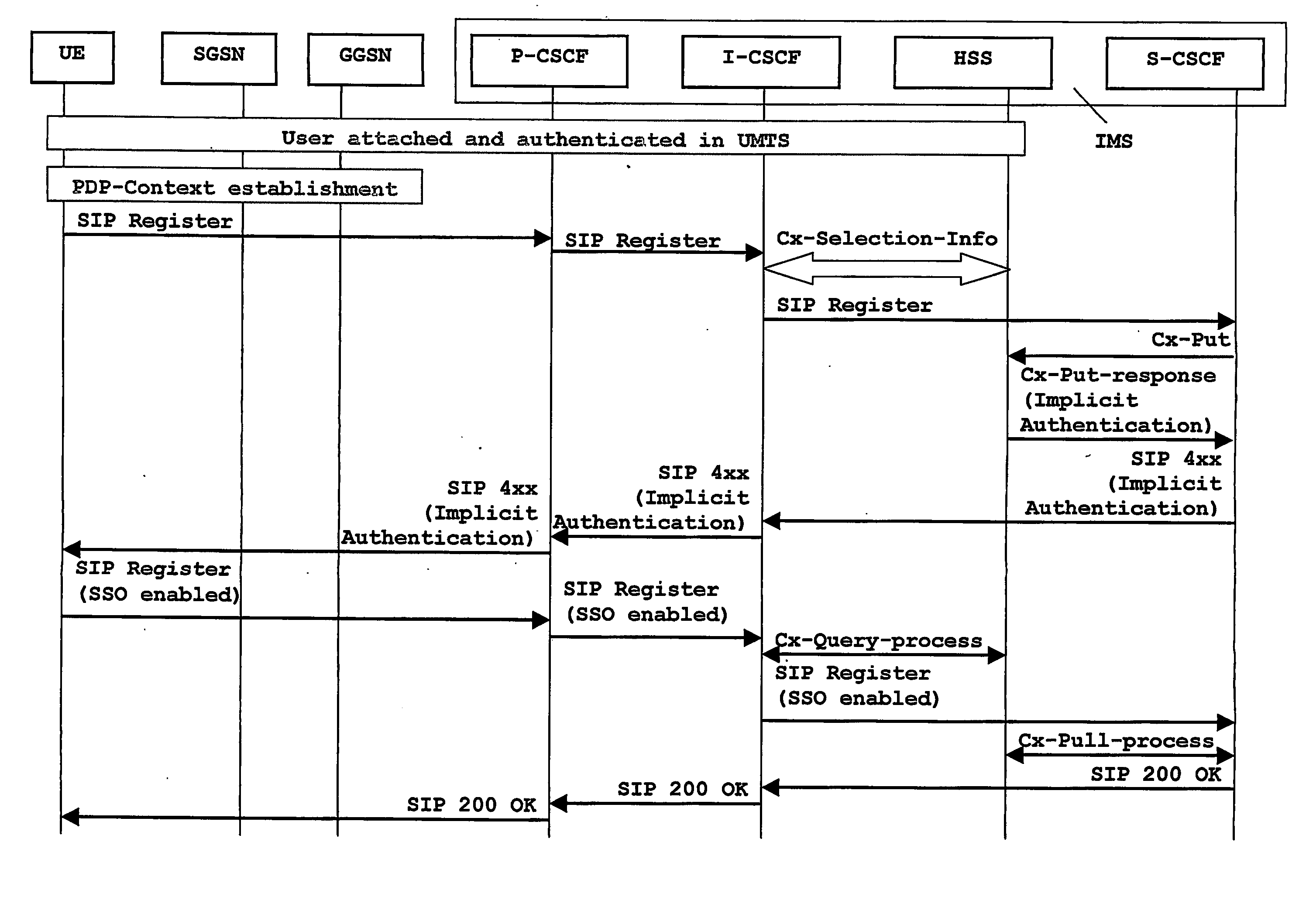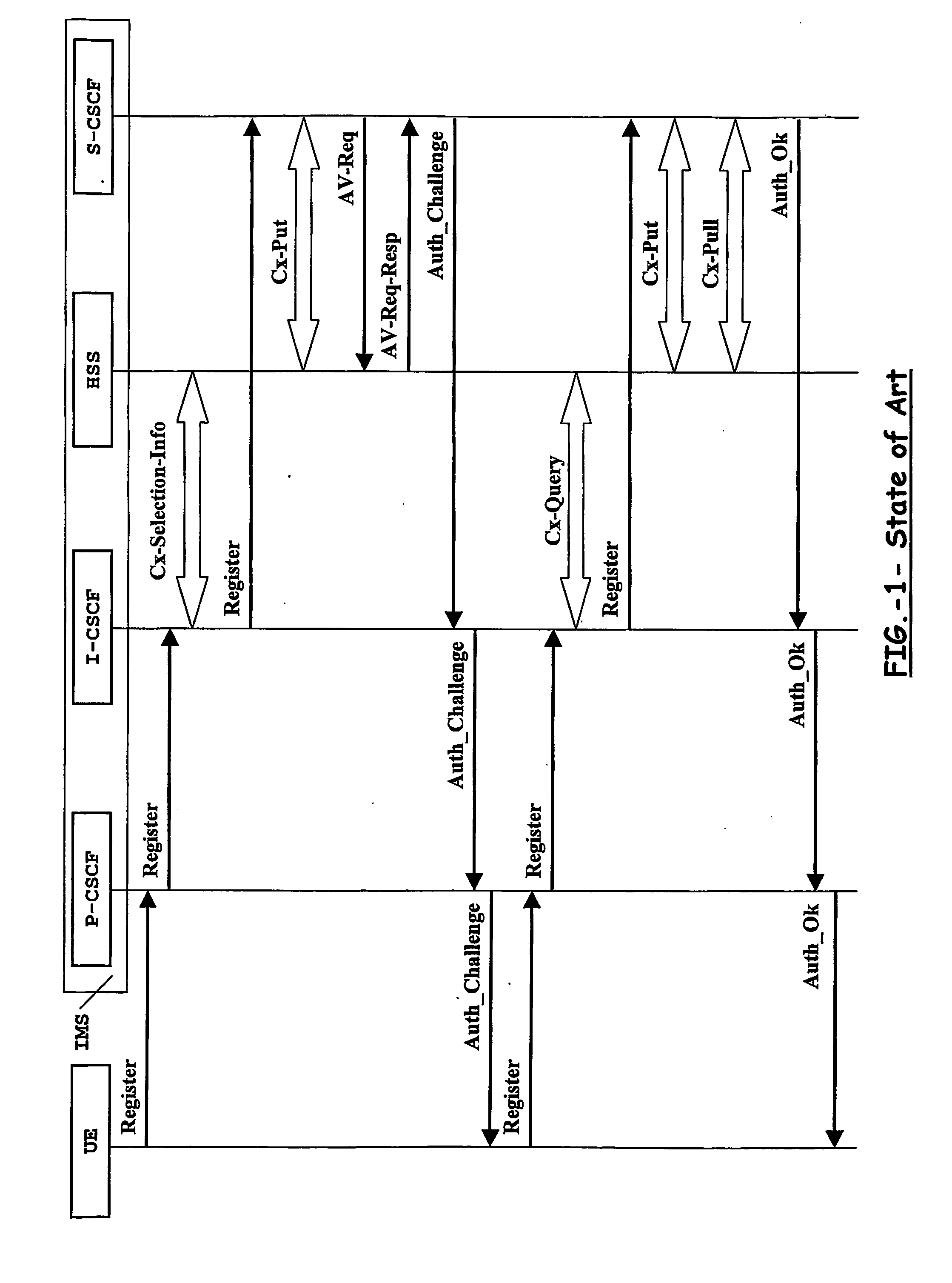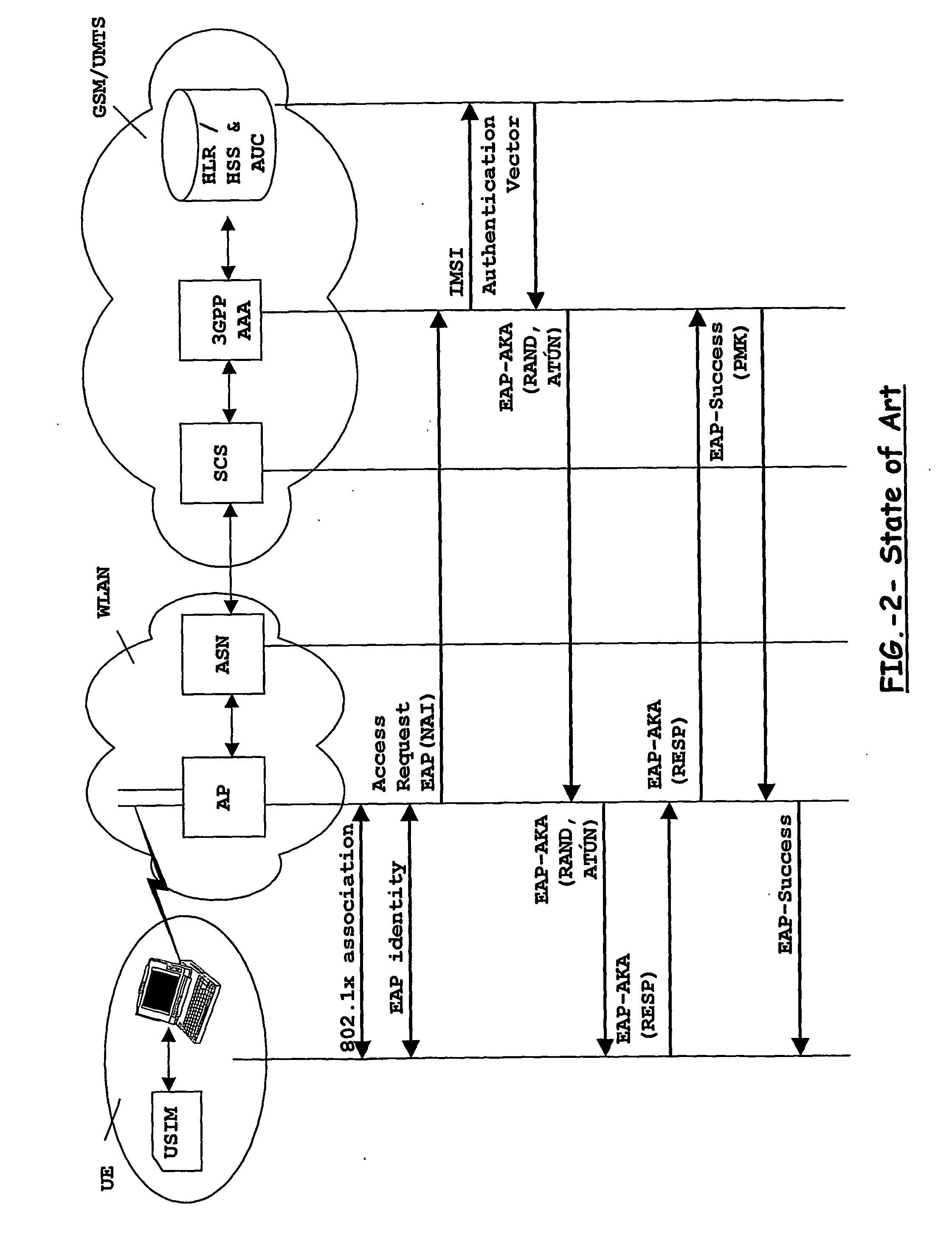Apparatus and method for authenticating a user when accessing to multimedia services
a multimedia service and authentication method technology, applied in the field of authentication methods and apparatus for users when accessing multimedia services, can solve the problems of no existing service or device that is able, complicated access across different technological domains, and extra processing and signalling capabilities of users' equipment or terminals
- Summary
- Abstract
- Description
- Claims
- Application Information
AI Technical Summary
Benefits of technology
Problems solved by technology
Method used
Image
Examples
first embodiment
[0057] Under this scenario and in accordance with the present invention illustrated in FIG. 3, there is provided a simplified mechanism for authenticating the user in the Multimedia domain wherein the user is notified of a possible implicit authentication. The user, or rather the user's equipment side (UE), upon receiving this notification, may accept the implicit authentication or force an explicit authentication in accordance with the applicable standard for the Multimedia domain as FIG. 1 illustrates. Moreover, this implicit authentication may apply to both authentication of the user by the network as well as authentication of the network by the user. Furthermore, said implicit authentication might be triggered by a subscriber server such as the Home Subscriber Server (HSS) responsible for the previous authentication of the user in the UMTS network, as illustrated in FIG. 3, or by a dedicated Multimedia Authentication device in co-operation with said subscriber server.
[0058] Ther...
third embodiment
[0074] A still third embodiment under the above second scenario is illustrated in FIG. 5 wherein a new field is returned to the SIP user-agent of the user's equipment during GSM attach and location updating procedures. Therefore, the subscriber server (HSS) of the Multimedia domain includes an indication of “Implicit Authentication” in the GSM operation “Insert Subscriber Data” towards the Serving GPRS Support Node (SGSN) in the access network. Then, the SGSN also includes this indication of “Implicit Authentication” in the GSM operation “Update Location Answer” towards the SIP user-agent.
[0075] This indication can apply to all or specific user's identifiers in the Multimedia domain, and is understood by the user's equipment (UE) as an implicit invitation to enable a Single Sign-On (SSO) access to the Multimedia domain that the user's equipment may or may not accept. Provided that the implicit authentication is acceptable for the end-user (UE) since no extra security is required, a ...
fifth embodiment
[0082] In accordance with a fifth embodiment illustrated in FIG. 7 under this third scenario, an end-user is attached and authenticated in WLAN by the UMTS network, the end-user, or rather the user's equipment (UE), has obtained an IP session open preferably by using a conventionally so-called secure tunnel to the home network. This secure tunnel is preferably established between the user's equipment and a Packet Data Gateway (PD-GW) by encapsulating data from the above IP session, generally an IP address, within the encrypted message payload, whilst an external IP address not related to the IP session is used between the user's equipment (UE) and the Packet Data Gateway (PD-GW).
[0083] At this stage and in like manner as for the first embodiment shown in FIG. 3, the signalling flow in FIG. 7 shows how the end-user and SIP user-agent, namely the user's equipment (UE), gain access to the Multimedia domain by sending a SIP Register message from the user side (UE) towards the Multimedia...
PUM
 Login to View More
Login to View More Abstract
Description
Claims
Application Information
 Login to View More
Login to View More - R&D
- Intellectual Property
- Life Sciences
- Materials
- Tech Scout
- Unparalleled Data Quality
- Higher Quality Content
- 60% Fewer Hallucinations
Browse by: Latest US Patents, China's latest patents, Technical Efficacy Thesaurus, Application Domain, Technology Topic, Popular Technical Reports.
© 2025 PatSnap. All rights reserved.Legal|Privacy policy|Modern Slavery Act Transparency Statement|Sitemap|About US| Contact US: help@patsnap.com



